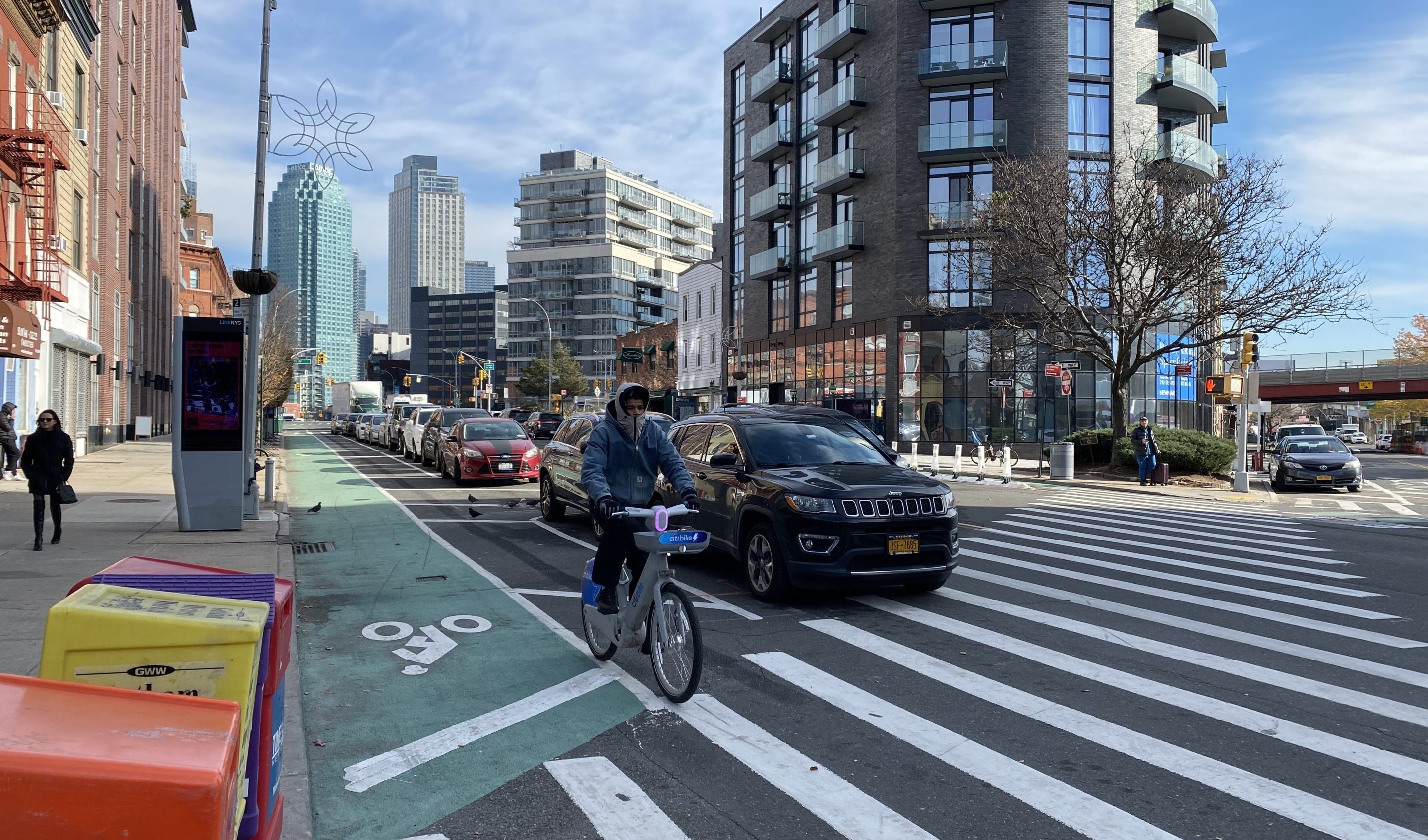A trio of new protected bike lanes in Long Island City lay the groundwork for a much-needed safe transportation network in the neighborhoods of western Queens — but officials still need to fill gaps to safely connect the area to the rest of the city.
City leaders cut the ribbon Wednesday on new bike paths on about a mile of roads along 11th Street, 44th Drive, and Jackson Avenue — culminating years of demands from safer streets advocates.
“These life-saving lanes fill a critical gap in the bike lane network and better connect cyclists traveling from all over Queens to both the Queensboro and Pulaski bridges, as well as the Queens waterfront,” Transportation Commissioner Ydanis Rodriguez told attendees.
Most of the new lanes have a line of parked cars between them and traffic to protect cyclists. At some locations DOT also added concrete barriers and cleared corners of parked cars — an increasingly popular street design that provides better visibility known as daylighting.

The changes come after a push in 2019 by area advocates and then-Council Member Jimmy Van Bramer for a "first-of-its-kind" comprehensive bike network in Long Island City following a string of road deaths in the area. The push for better bike infrastructure on 11th Street goes back even longer.
Four Queens pols released a new “road map for streets safety” Tuesday detailing annual street safety projects they want to see DOT complete in their neighborhoods in the western slice of the World's Borough before the end of the decade.
Situated between industrial areas and two vehicular crossings into Manhattan, Long Island City suffers from a deadly mix of heavy truck and car traffic and a surging residential population. For years north-south Vernon Boulevard, along the waterfront, provided cyclists the only protected bike route in the area.
“It used to be pretty harrowing — well, it still is in a lot of places — but the only protected infrastructure was on the waterfront,” said Laura Shepard, a Queens organizer with Transportation Alternatives.
“When you’re gonna have bike infrastructure that’s either on or in close proximity to truck routes or a lot of trucks, the bike infrastructure has to be protected with physical barriers.”
The project celebrated on Wednesday covered 44th Drive, from Vernon Boulevard to 23rd Street; 11th Street, between 44th Drive and Jackson Avenue; and Jackson Avenue from Vernon Boulevard to the Pulaski Bridge.
The two southernmost blocks of 11th Street now have flat concrete curbs separating cyclists from cars, while the rest of the bike lanes are all bordered by car parking.
Shepard said the concrete curbs would work well on narrow streets that don't have the space to carve out a parking-protected bike lane.
"[We] hope to see this replicated in lots of places where protection is necessary, but parking protection isn’t feasible because of street widths," she said.

Unfortunately, the new lanes on 11th Street don’t connect directly to the Pulaski Bridge. The intersection with Jackson Avenue at the foot of the connector is still pretty confusing.
“That whole intersection still needs to be redesigned and I hope that, given that we now have protected bike lanes on both 11th Street and McGuinness Boulevard, the DOT will take another look,” Shepard said.
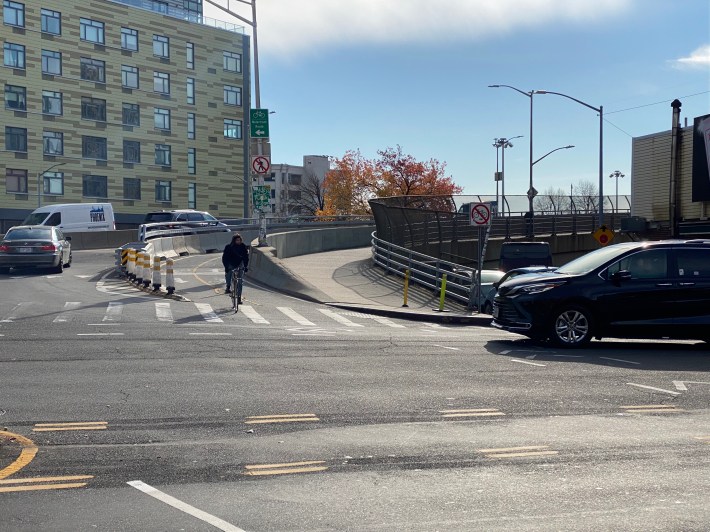
The Jackson Avenue bike lanes also downgrade into conventional bike lanes at the messy intersections near the Queens-Midtown Tunnel entrance at 51st Avenue and Vernon Boulevard.
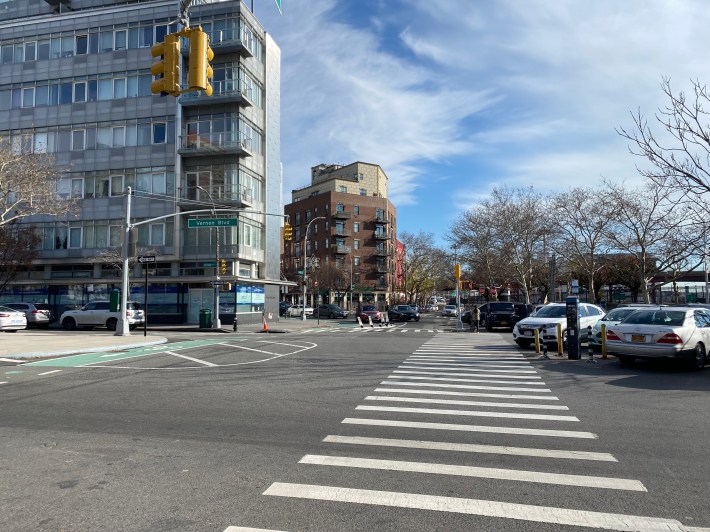
Both sets of new bike lanes at the bridge — 11th Street going north-south, and Jackson Avenue going southwest — were largely free of illegally-parked cars, and on 11th Street in particular, the city installed good daylighting at corners with bike racks to keep out cars.

Similarly, the lanes on 44th Drive were mostly clear, except for a section next to a construction site, and another spot along a more industrial stretch where drivers blocked the bike lane.
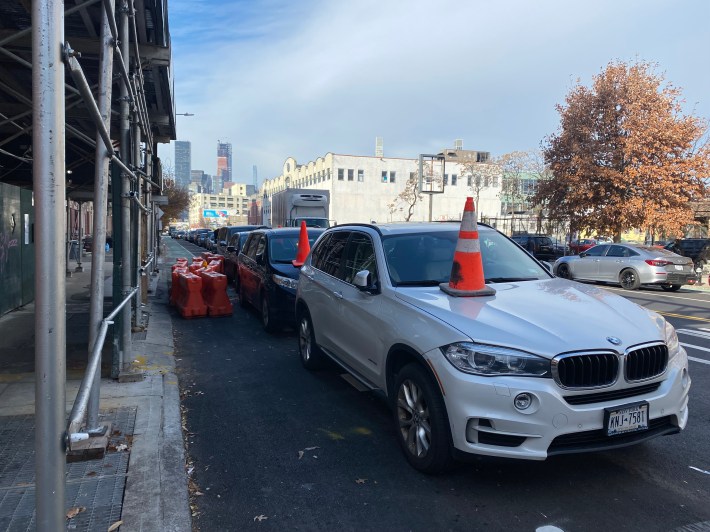
Cyclists heading further north to the Queensboro Bridge will still need to use unprotected sharrows on 23rd Street, which advocates hope DOT can upgrade into protected lanes.
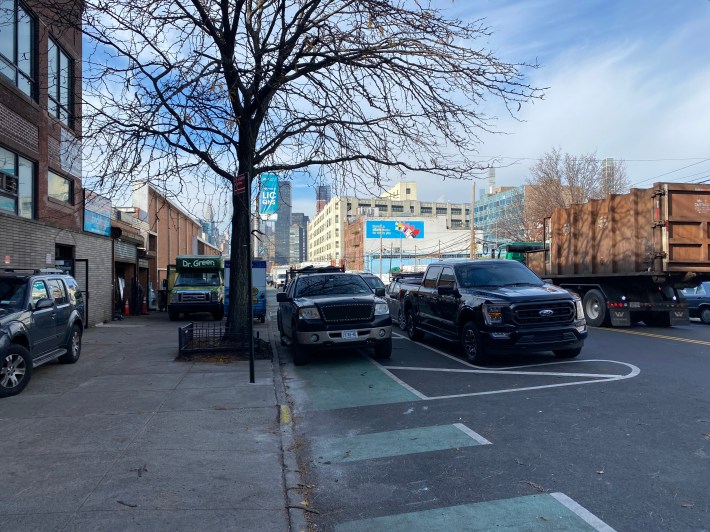
Other missing links are improvements to the deadly Borden Avenue, and creating a greenway through the industrial sub-neighborhood of Blissville, Shepard said.
The advocate also urged the agency to turn one of the three north-bound car lanes on the Pulaski Bridge into another bike and micromobility lane to add capacity to the heavily used 2016 bike lanes that logged nearly 80,000 crossings last month, according to DOT counts.
“It’s exciting, but we still need a lot more,” Shepard said.
